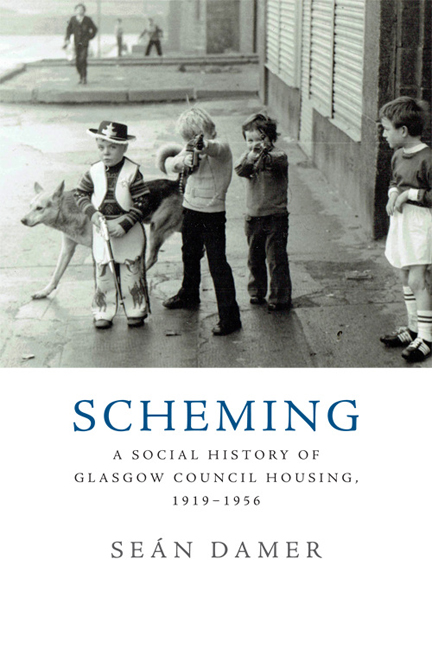Book contents
- Frontmatter
- Dedication
- Contents
- List of Tables and Figures
- Acknowledgements
- Preface
- 1 Introduction
- 2 Mosspark: Homes Fit for Heroes?
- 3 Hamiltonhill: A Pioneering Slum-Clearance Scheme
- 4 West Drumoyne: Blue-Collarland
- 5 Blackhill: Out of the Slums
- 6 Craigbank: Amateur Dramatics?
- 7 South Pollok: ‘The Bundy’
- 8 Alarums and Excursions
- Appendix 1 Balloting for a Council House
- Appendix 2 Methodological Notes
- Bibliography
- Index
7 - South Pollok: ‘The Bundy’
Published online by Cambridge University Press: 12 November 2019
- Frontmatter
- Dedication
- Contents
- List of Tables and Figures
- Acknowledgements
- Preface
- 1 Introduction
- 2 Mosspark: Homes Fit for Heroes?
- 3 Hamiltonhill: A Pioneering Slum-Clearance Scheme
- 4 West Drumoyne: Blue-Collarland
- 5 Blackhill: Out of the Slums
- 6 Craigbank: Amateur Dramatics?
- 7 South Pollok: ‘The Bundy’
- 8 Alarums and Excursions
- Appendix 1 Balloting for a Council House
- Appendix 2 Methodological Notes
- Bibliography
- Index
Summary
Development of South Pollok
South Pollok was a very small scheme developed in 1947–8 in a space at the Peat Road roundabout, north of Priesthill and south of the well-planned, pre-war ‘Old’ Pollok scheme. It was a stopgap site, originally earmarked for social and leisure facilities. Built under the provisions of the 1946 Housing Act, it was categorised as an ‘Intermediate’ scheme, thus ensuring continuity of the pre-war three-tier system, although it was unique in the Pollok area. It comprised the following streets: Bridgend Road, Cowglen Road, Dykefoot Drive, Fairhill Avenue, Lawside Drive, Linnbank Avenue and Nerston Road. It consisted of 226 houses, of which 132 were in three-storey tenements, 6 were semi-detached cottages, 12 were terraced tenements and 76 were twostorey flats. Of this stock, the tenements were the last to be built, and were the houses which bounded the Barrhead Road. All of these houses were either three-or four-apartment. The rents in South Pollok were considerably lower than in adjoining Priesthill. The annual rental for a three-apartment house was £17.10.0d., and for a four-apartment £20.5.0d.
For reasons which are obscure, but are probably to do with sheer demand from poorer tenants, the scheme was used substantially for housing overcrowded tenants from slum areas on Glasgow's south side, such as the Gorbals and Govan. Mooney states that over 130 of the original 226 tenants came from these areas. This, coupled with its flat-roofed tenemental design, shocked the adjacent tenants in ‘Old’ Pollok in exactly the same manner as West Drumoyne did the tenants of the ‘Ordinary’ Drumoyne scheme, as we have seen above. South Pollok had a short life; it was demolished in 1973 to make way for the Pollok shopping centre. But it is included in this book to demonstrate that within one general council housing area – Greater Pollok –it was possible to have two such divergent schemes as Craigbank and South Pollok. It is curious that the Corporation persisted in developing schemes with such marked distinctions in quality and character in the postwar years, when it was obvious that this would exacerbate tension between the tenants. After all, it had the experience of Blackhill and Riddrie upon which to draw. It seems that officials must have been total prisoners of their own ideology about who was and was not ‘deserving’.
- Type
- Chapter
- Information
- SchemingA Social History of Glasgow Council Housing, 1919-1956, pp. 124 - 136Publisher: Edinburgh University PressPrint publication year: 2017



